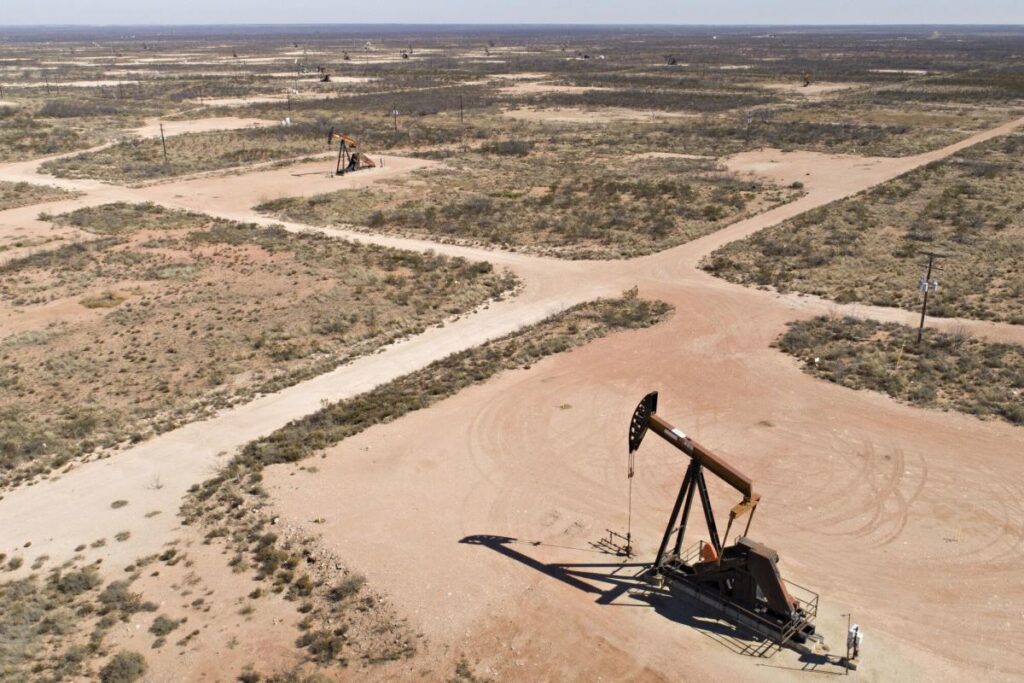(Bloomberg) – The U.S. energy patch is ripe for a takeover boom, as oil and gas producers turn to dealmaking to find new sites to drill.

Source: Reuters
Companies are seeking to bulk up and consolidate, particularly in the Permian basin of Texas and New Mexico, the largest and most productive oil field in the U.S., industry experts say. Tie ups bring several benefits, including expanding their supply of well locations and scale that can strengthen their bargaining power with suppliers.
“The world needs more U.S. oil, and the Permian has several thousand locations remaining that are viewed as high quality,” said Pete Bowden, global head of industrial, energy and infrastructure banking at Jefferies Financial Group Inc. “If you’re a major oil company, you have to think about getting that supply while it’s available.”
Consolidation in the oil fields threatens to further slow production growth from the Permian. Companies are looking to buy up rivals to secure drilling sites for the future — not to boost their output immediately. They often cut back on drilling rigs when they close deals, which slows production growth and could put upward pressure on oil prices.
As much as $230 billion may be spent on oil and natural gas deals in North America this year, ending a three-year slump in activity, McKinsey & Co. wrote in February.
Energy companies announced $25 billion in deals this year, with Ovintiv Inc. leading the way with an agreement this month to buy Permian assets from EnCap Investments for about $4.3 billion.
Exxon has held preliminary talks with Pioneer Natural Resources Co., according to the Wall Street Journal. Pioneer is one of the biggest players in the Permian, with a market value of about $53 billion.
An Exxon-Pioneer deal would be the largest corporate energy transaction since Shell Plc’s blockbuster takeover of BG Group in 2015, according to Rystad Energy.
Other drillers are testing the burgeoning deal market.
Diamondback Energy Inc. is working with a financial adviser to sell non-core assets in the western Permian Basin, Bloomberg News reported. Meanwhile, NGP Energy Capital Management is seeking buyers for Permian-focused oil producers Tap Rock Resources LLC and Hibernia Resources, according to people with knowledge of the situation, who asked to not be identified because the deliberations are private. Reuters first reported that they are for sale.
The NGP processes illustrate another factor driving dealmaking: private equity firms need to offload assets as they look to raise new funds and deploy capital.
Representatives for NGP, Tap Rock and Hibernia didn’t respond to requests for comment.
Permian growth
The Permian basin is set to grow 40% before hitting its peak of 7.86 MMbbl in 2030, according to a Bloomberg survey of major forecasters. The growth alone would be like adding another Iran, the fifth-biggest member of the Organization of Petroleum Exporting Countries, to global oil markets.
The basin is still relatively fragmented, which makes consolidation somewhat inevitable.
“We’re still mid-cycle in the consolidation phase of the Permian,” said Matt Gallagher, who ran Parsley Energy Inc. before it merged in 2021 with Pioneer in a $4.5 billion deal. “We’ll never get down to only 10 players, but there’s hundreds left and it can get down to 10 relevant players.” Gallagher now runs closely held Greenlake Energy Ventures LLC.
OPEC+’s recent surprise cut and continued expectation of demand outpacing supply is setting a floor for crude prices, which makes it easier to ink oil deals, said Muhammad Laghari, senior managing director at Guggenheim Securities.
“We expect corporate consolidation and merger of equals to continue in the energy space, particularly for companies that are in need of scale,” Laghari said.
Industry observers are closely watching Callon Petroleum Co., SM Energy Co., Southwestern Energy Co. and Chesapeake Energy Corp. as possible takeover targets, given their overlapping acreage and need to scale up.
Another ripe target: closely held Endeavor Energy Resources, which has a massive position in the Permian and has drawn interest in the past from Exxon, Chevron Corp. and ConocoPhillips.
Mewbourne Oil Co., another closely held producer active in the Permian, also stands out because it’s relatively large and has high quality assets.
Representatives for Callon, Southwestern, and Mewbourne didn’t respond to requests for comment. Representatives for SM, Endeavor and Chesapeake declined to comment.
Inventory needs
To be sure, there are several factors that could challenge deals, from social issues to heightened regulatory scrutiny. But companies with strong balance sheets have a big incentive to overcome those types of hurdles: They need more inventory.
U.S. shale has several advantages over conventional oil production, such as quick-to-produce wells that have relatively low risks and costs.
Nearly a decade into the Permian oil boom, most of the best drilling sites have been tapped, meaning producers are increasingly looking to buy more acreage to extend their bank of future drilling locations, known as ‘inventory’ in industry parlance.
“Many of these businesses are depleting their resource base and have to consistently make decisions on what the company’s story is going to be, and most of those decisions lead you to M&A one way or another,” said Lande Spottswood, a partner at Vinson & Elkins who advises on mergers and acquisitions.

